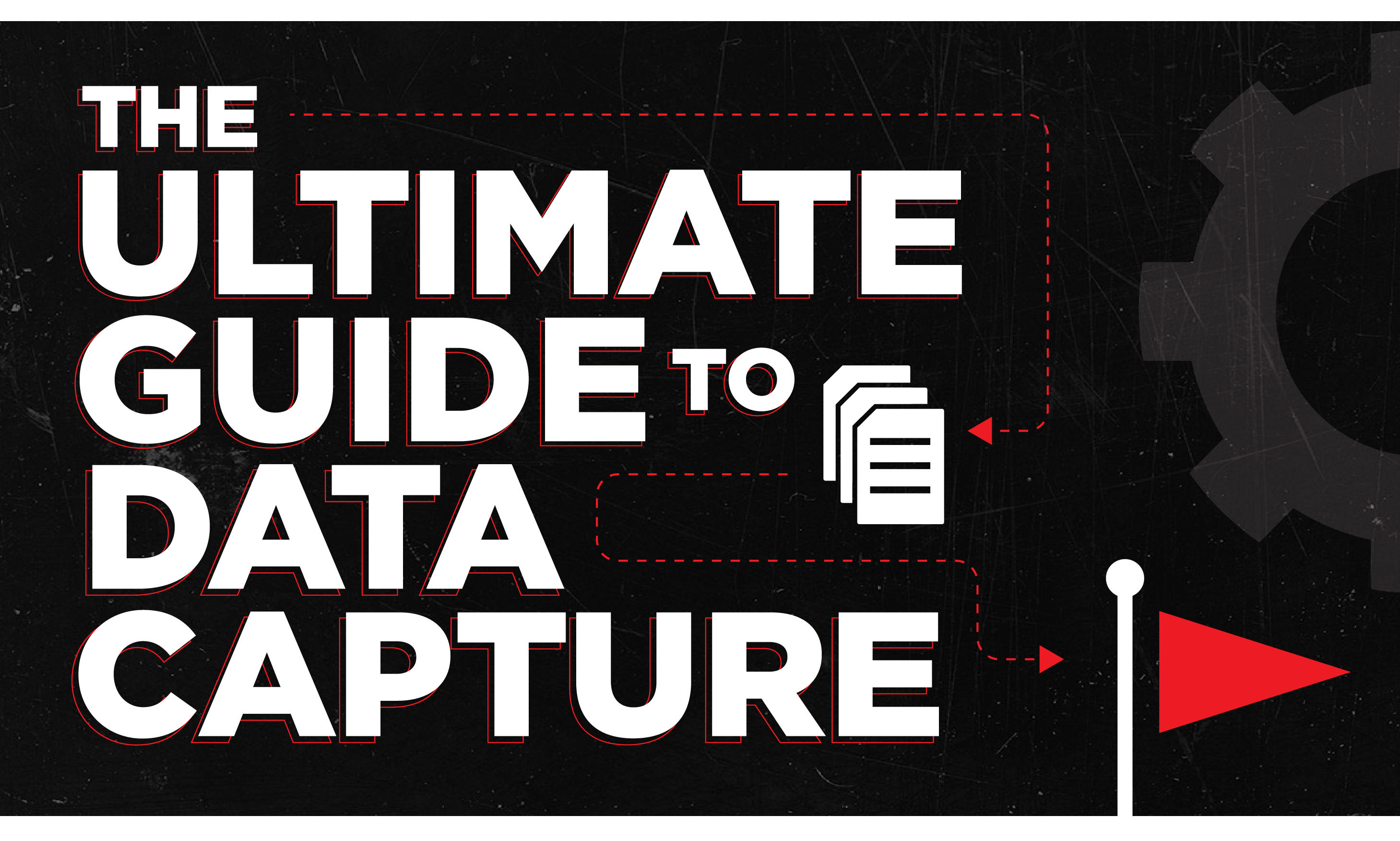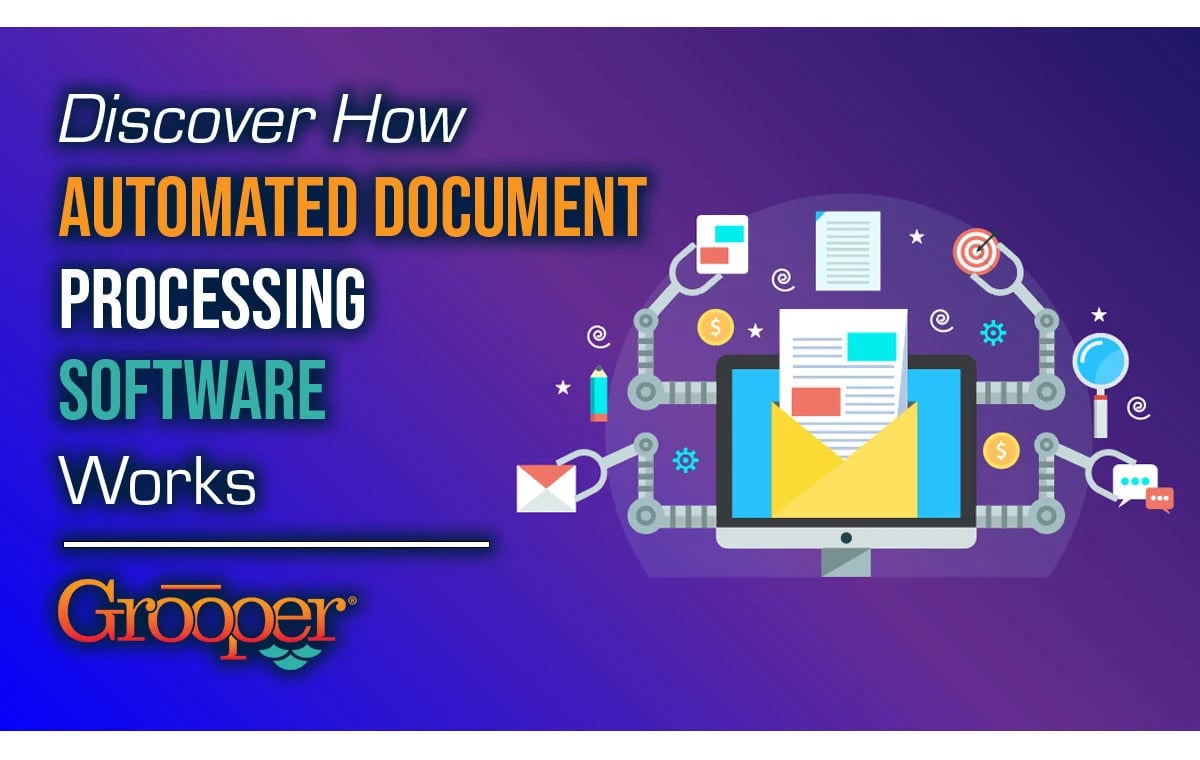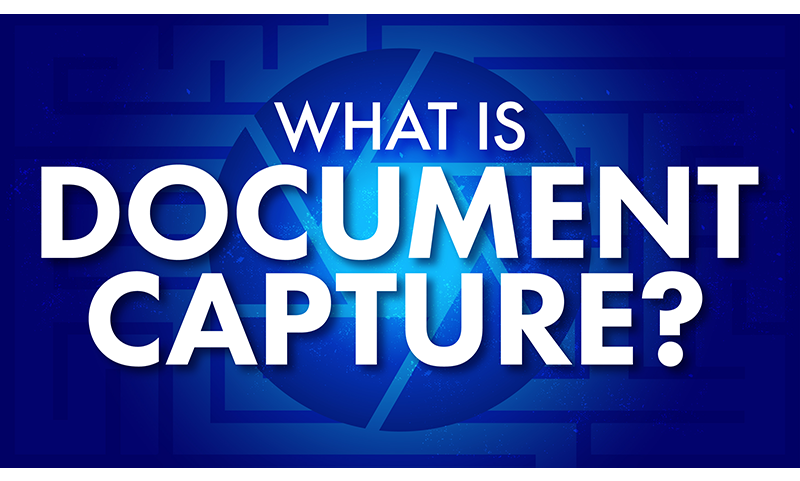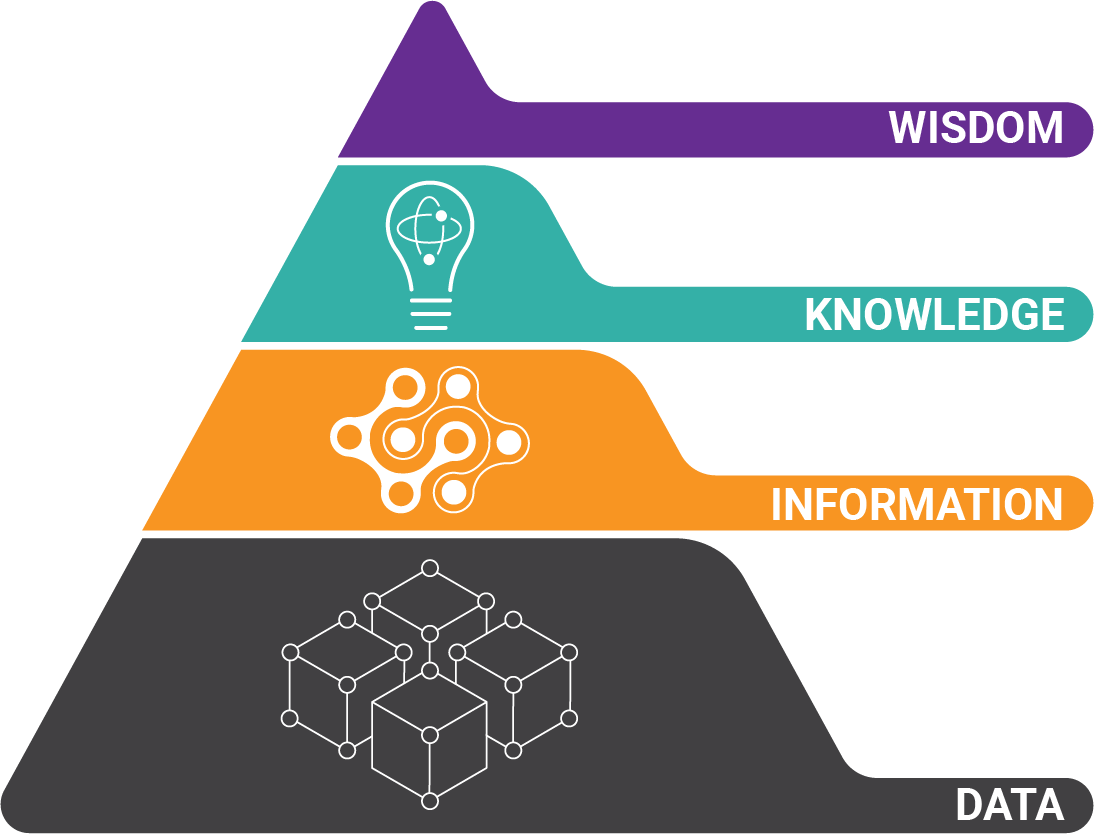Less than .5% of all data created is ever used or analyzed. This is why determining which data you need can be so challenging. Your business needs data to run — and the better that data is, the better your decisions will be, right?
The more data that your business ingests and uses, the more you need a solid data capture platform. And the more value you will get from a data capture solution.
Data can come in many forms, such as:
- Customer data
- Vendor data trapped in documents
- Third-party data
- Product data
- Legal documents
- Much more
Data and information play a significant function in the landscape of any business. So the more that a business captures data faster and effectively, the more success a business can have.
This is where data capture solutions come into play. There have been enormous breakthroughs in the different methods of data capture in the last 20 years, with many advantages available to your business.
You will gain valuable insights and make more informed decisions with accurate and complete data through a capture solution. Let's get started with defining what data capture is and its many methods.
Ultimate Guide to Data Capture Table of Contents:
- What is data capture?
- Methods of data capture
- The data capture process
- Benefits of data capture solutions
What is Data Capture?
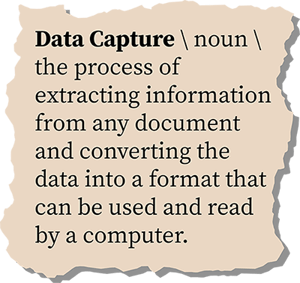 Data capture is the process of extracting information from any document and converting the data into a format that can be used and read by a computer.
Data capture is the process of extracting information from any document and converting the data into a format that can be used and read by a computer.
Data capture solutions can process documents in many formats. Data capture was initially created for extracting data from scanned paper files. It has evolved to capture much more complex formats as electronic formats have become more and more prevalent.
Data capture solutions can now ingest documents from any source and in nearly any format. Emails, faxes, and common office document formats are common sources for data capture. Documents can be captured in virtually any format, like a highly structured medical form, a semi-structured invoice, an unstructured lease document, questionnaire, receipt, or even a video or image.
Compared to traditional methods of capture, like manual data capture (hand-keying), technological advancements in the last 20 years have transformed data capture solutions. They are now robust tools that can save substantial time and costs and prevent manual errors.
These advancements include:
- Artificial intelligence (AI)
- Machine learning (ML)
- Natural language processing (NLP)
- Many forms of optical character recognition (OCR)
- Image processing (IP)
- Cloud technologies
A common example of data capture is invoice processing. Many companies in every industry use data capture every day to automate the gathering of data from invoice documents. Accounts payable departments are able to eliminate the tough, slow work of manually hand-keying invoice data into accounting systems or ERP solutions.
Data capture solutions are also used in the healthcare industry to extract data from patient forms, medical records, insurance documents, and explanation of benefits (EOB) documents. Healthcare providers use data capture to accelerate the time-consuming work of EOB processing in order to recover revenue much faster from insurance companies.
Regardless of industry, the data gathered from a variety of documents can also be leveraged to get insights into how their business is performing and ways to improve revenue and cut costs.
Free Buyer's Guide: How to Capture Data
Better than Ever Before
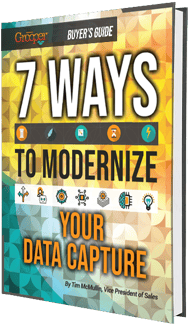
There are many document data options, but a lot of today's solutions can't handle everyday basic capture tasks. So, what makes capture software powerful enough to handle your business-specific needs?
Get our free buyer's guide and discover 7 valuable features that will make your data capture projects a huge success!
Methods of Data Capture
 There are two basic methods of data capture: manual and automated.
There are two basic methods of data capture: manual and automated.
Manual data capture is the process of a human typing data into an ERP or other business system while looking at a paper or scanned document on a screen. This is a methodical, time-consuming process that is very error-prone. Humans make around 5-7% errors in data entry.
In comparison, automated data capture is fast, easy, efficient, and highly accurate as it virtually eliminates human error. Data capture solutions accomplish this by using advanced technology and software to find and extract relevant data from paper and digital sources.
Comparison: Manual vs Automated Data Capture
| Manual | Automated | |
| Relies On: | Humans typing data | Intelligent software |
| Human Involvement: | High | Low |
| Manual Error Rate: | High | Almost zero |
| Time Required: | Possibly thousands of hours every month | 10 minutes daily or less |
| Best Use: | A few documents worth of data every day, or less. | Anything more than several documents of data daily |
NOTE: Not all data capture solutions are created equal, especially when it comes to document capture. A lot of capture software was originally developed more than 20 years ago, with little innovation in the last 10 years.
Why is this important? Because the demands of modern clients have changed greatly in the last 10 years. Many people (including yourself, probably) need more data captured, and this requires more sophisticated methods to get data from scanned paper documents.
But many document capture solutions aren't up to the job, and end up requiring a lot of manual work on the side. (Grooper is not one of those legacy solutions, and was actually created because older solutions stopped innovating.)
When should you use manual or automated data capture methods?
The only time you would want to use manual capture is if the workload is very small, like a few documents worth of data every day, or less. The other scenario for manual capture is if there is a one-off project involving a handful of documents.
If the workload is any larger than this, then automated data capture methods make a lot of sense as the time and cost savings are significant.
But companies aren’t only looking at ROI (Return on Investment) anymore. According to Gartner, companies are making decisions beyond the traditional cost/benefit analysis of years past. Companies now consider ease of use, time to implement, and many other factors in determining a software solution's acceptance into the organization.
Manual Data Capture
 Instead of relying on software automation to capture data, manually capturing data relies on a human to look at a document and type the data with their hands into a computer database, ERP system, or other business application.
Instead of relying on software automation to capture data, manually capturing data relies on a human to look at a document and type the data with their hands into a computer database, ERP system, or other business application.
There are two manual steps to this process: Keying in required data and manually validating that all information was entered correctly.
The manual method is suitable for:
- Businesses with low or variable volumes of data to capture
- Possibly businesses that have high volumes and use automated solutions but need to get data from a low volume of documents that are very different from their normal projects.
- Data that is impossible for technology to extract.
Disadvantages of manual data capture
There are many disadvantages to capturing data by hand. It is slow, error-prone, painstaking work that employees generally don't enjoy.
According to the US Bureau of Labor Statistics, data entry jobs are forecasted to have negative growth over the next 10 years. This means it will be more and more difficult to find people to perform manual data entry tasks.
Manually processing documents also costs companies money by not having data available for days or weeks. Two examples are:
- Early payment discounts that vendors offer if invoices are paid quickly
- Late payment penalties for invoices paid after set dates
Capturing data from invoices manually is very slow, so companies struggle to meet the right deadlines to save money and avoid financial penalties.
The only way to scale and capture data from more documents is to add more people to key in data (see labor issue above). As a result, many businesses are increasingly adopting automated data capture solutions.
Are there any advantages to using manual data capture over automated data capture?
There are a few advantages, but they are insignificant compared to the value of automation. The biggest positive is that manual data entry gets your employees very familiar with the documents your company uses.
By looking at your documents or documents from your vendors for many hours a day, your employees will get a great understanding of the nuances of how these documents are structured.
Ironically, this comes as a benefit when your company adopts an automated data capture solution, as you have personnel who can provide great knowledge and insight when setting up automation for your documents.
Automated Data Capture
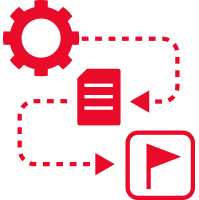 Let's explore the many methods of automated data capture, depending on the requirements for your business data:
Let's explore the many methods of automated data capture, depending on the requirements for your business data:
Optical Character Recognition (OCR)
OCR is a technology used to find machine-generated text and extract data from scanned paper documents, images like JPGs, and PDFs. It then helps convert that information into machine-readable data, which eliminates the need for manual data entry to create machine-readable data.
 OCR does not read handwriting, electronic documents, or PDFs with electronic text. Handwriting recognition is a job handled by ICR technology (see below). OCR is not needed for electronic documents or PDFs with electronic text as that data is already machine-readable and easily extracted.
OCR does not read handwriting, electronic documents, or PDFs with electronic text. Handwriting recognition is a job handled by ICR technology (see below). OCR is not needed for electronic documents or PDFs with electronic text as that data is already machine-readable and easily extracted.
The first OCR machine for businesses was used in 1954 at Reader's Digest to find and integrate machine-generated characters into computers through punch cards.
Virtually every industry uses OCR in one way or another, especially to extract data from invoice documents received in bulk. Popular industries for OCR usage are those that generate high volumes of data, like insurance, healthcare, banking, oil and gas, government, and retail.
But OCR on its own just does the conversion of data - text from images. There’s a lot more to data capture than OCR.
Examples of OCR engines are Abbyy, Amazon Textract, Google Vision, Microsoft Azure Cognitive Services, Tesseract, Omnipage, Transym and many others.
Intelligent Character Recognition (ICR)
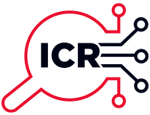 Intelligent character recognition is a more advanced OCR that is designed to read handwritten characters on document images and convert that information into meaningful data that is machine-readable.
Intelligent character recognition is a more advanced OCR that is designed to read handwritten characters on document images and convert that information into meaningful data that is machine-readable.
ICR can also be thought of as the next-generation technology of OCR. It analyzes character features in human handwriting along with pixel-based processing to recognize closed loops, lines, and line intersections.
While machine-printed text is standard, recognizing the variations of human handwriting is a much more difficult task. Because of this, it has only been very recently that ICR works successfully outside of a few very specific use cases, like reading handwritten postal addresses or check information.
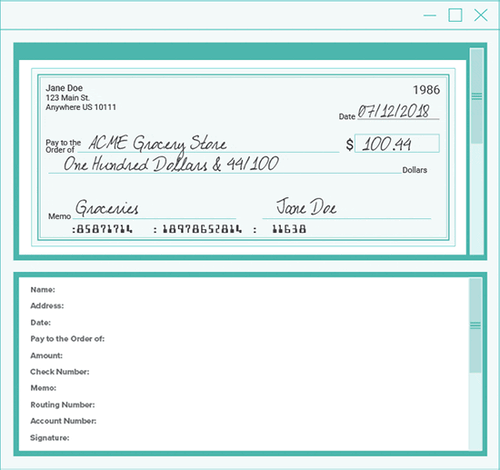
Data capture solutions combine ICR to accurately get handwriting along with traditional OCR to capture the machine-printed text, like in the check example above. At a smaller level, ICR more accurately distinguishes the difference between handwritten characters like 'O', 'C', and 'G' that OCR would have real trouble with.
Any industry that relies on documents with handwriting benefits from using ICR technology for their businesses. These documents include:
- Checks
- Bills
- Bank statements
- Healthcare office forms
- Customer surveys
- Applications
- Timesheets
- Sales orders
- Applications
Intelligent Document Processing (IDP)
 Intelligent Document Processing is the culmination of decades of legacy capture solutions. IDP uses several technologies, like image processing, OCR, and ICR, to yield better capture accuracy and efficiency than ever before.
Intelligent Document Processing is the culmination of decades of legacy capture solutions. IDP uses several technologies, like image processing, OCR, and ICR, to yield better capture accuracy and efficiency than ever before.
The “intelligent” part of “IDP” signifies the use of some sort of AI to aid in the extraction of data. Modern IDP systems use a combination of AI technologies like ICR/OCR, machine learning (ML), computer vision, deep learning, natural language processing (NLP), and generative AI (like ChatGPT).
This makes it possible to extract, classify, and validate data to automate document workflows. The combination of these technologies yields greater automation and scale than has ever been possible before.
Optical Mark Recognition (OMR)
 Optical mark recognition is a technology used by data capture software to detect the existence or absence of a mark in a checkbox or bubble.
Optical mark recognition is a technology used by data capture software to detect the existence or absence of a mark in a checkbox or bubble.
Also known as optical mark reading, OMR is most often used on applications, surveys, medical forms, and even exam papers.

If companies have a significant amount of documents with checkboxes, an OMR capture capability can be reason enough for companies to invest in automated data capture. The other option is to manually enter OMR data, which is particularly time-consuming for data entry clerks.
Electronic Data Interchange (EDI)
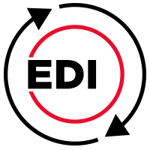 If you aren't familiar with this form of data, EDI is a method that businesses use to exchange documents in one standard, unchanging electronic format. This replaces the old-fashioned paper-based methods and is vastly more efficient for both companies involved.
If you aren't familiar with this form of data, EDI is a method that businesses use to exchange documents in one standard, unchanging electronic format. This replaces the old-fashioned paper-based methods and is vastly more efficient for both companies involved.
There are over 90 different EDI formats for the many different kinds of business files in a variety of different industries or horizontal markets.
For instance, EDI 810 is for invoice exchange, and EDI 813 is for electronic filing of tax returns, so virtually any company could use these files. On the other hand, EDI 835 and 837 are for health care claims, and EDI 872 is for residential mortgage insurance, so these formats are only used by companies in those industries.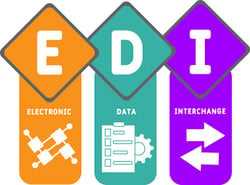
Some data capture solutions (like Grooper) can import EDI data directly from an EDI file into a business database or ERP system or create a PDF document representing the EDI document since EDI files are not easily human-readable.
It’s becoming more and more common for companies to need to manipulate the EDI data that comes into their environment. Often, even though the EDI “standard” is being followed, data cannot be ingested by a target system without tons of manual manipulation. That’s where data capture can really help.
Barcodes
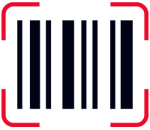 Barcode technology has been around for decades and is most commonly used on goods and product item packaging. They can be easily found in:
Barcode technology has been around for decades and is most commonly used on goods and product item packaging. They can be easily found in:
- Supermarkets and stores
- Tracking payments on invoices
- International orders
- Representing patients on hospital healthcare documents
You can recognize barcodes by black and white parallel lines. The 1D barcode lines represent encrypted identification numbers and can be scanned with a barcode scanning device. Barcodes and the unique ID numbers associated with them help to identify products and track packages with computer software.
Data capture software uses technology to easily:
- Read a barcode
- Translate it into the proper number (or text in the case of a QR code)
- Convert it into machine-readable data.
Barcodes are typically used as a pointer to more data. For instance, the barcode number is a record number in a database designating a single entity, and more information about that entity can then be queried from a database and added to the document record.
Barcode recognition in data capture solutions has long been one of the most reliable ways to augment data capture. But it requires a barcode on the document or on a separator sheet. It can be very costly to manually insert separator sheets.
QR Code
 These codes are the two-dimensional (2D) barcode in a square shape that contain more information that you can scan with your smartphone.
These codes are the two-dimensional (2D) barcode in a square shape that contain more information that you can scan with your smartphone.
They are often used on brochures, product packaging, and commercials on TV screens and contain links to PDFs, websites, social media accounts, or even WIFI passwords.
Some QR codes can hold thousands of characters of data.
Restaurants are increasingly using QR codes in place of traditional printed menus. Instead of holding a paper menu, customers scan a QR code on their table and access a digital menu on their phones.
Data capture solutions can also capture the QR code, de-code the bars, and digitize the data for machines to read. Since QR codes can hold more data than traditional barcodes, less reliance on external systems like databases is a big benefit for using QR codes in a production data capture solution.
Web Scraping
 Electronic data capture software can also perform a method of capture, which is sometimes known as data scraping.
Electronic data capture software can also perform a method of capture, which is sometimes known as data scraping.
Data scraping uses web crawlers or web bots to find and collect data from websites and transfer the data into databases, content management systems, or ERP solutions.
Web scraping can collect somewhat static business data like addresses, employee names, etc., or changing data like news, stock market prices, or weather data. This data can then be injected into databases or other business solutions for analysis or to be retrieved at a later time.
DID YOU KNOW? Robotic Process Automation (RPA) grew out of the simple idea of Web Scraping.
Voice Capture
 Voice capture technologies use speech recognition to capture and process or convert spoken word data actual text.
Voice capture technologies use speech recognition to capture and process or convert spoken word data actual text.
Our very own data capture platform, Grooper, can access Microsoft Azure's speech-to-text service. Grooper sends the audio file to Azure and receives text files back of everything contained in the recording. That text can then be utilized in any downstream business process.
Other good examples include Google's Automatic Speech Recognition or IBM Watson's Speech to Text service.
DID YOU KNOW? Some think of Alexa, Siri, or Microsoft Cortana as voice capture solutions. Those are voice-controlled virtual assistants, not necessarily voice capture solutions.
They were not created with the purpose of converting data from audio files into text files. But the dictating you do on your smartphone when doing “text to talk” is very similar technology.
Digital Signatures

There was a time when the only legally binding signature was one you did with a pen. And sometimes even that had to be done in front of witnesses, like a notary public.
Digital signatures are now frequently used to authorize approvals and permissions for documents or digital messages. Where they are accepted, they are as legally binding as normal handwritten signatures on paper documents.
But digital signatures allow someone to use their computer or smartphone to “sign” a document, thus bringing a lot of flexibility to a business process that requires signature approval.
Digital signatures are:
- Legally binding
- Very secure against hacking or malfeasance
- Secure against impersonation
The Data Capture Process

Data can be captured by several different processes or methods. Capture software has come a long way in the last 20 years and the best solutions can now get any data with a very high level of accuracy, which saves countless hours of tough manual work, and benefits businesses in many ways.
These modern methods make collection fast, effective, simple, accurate and transparent.
There are really five separate phases of data capture. They are:
Phase 1: Acquire / Import Documents
 The data capture process begins with a form or document filled out or created by a human. Then the documents have to be imported some way into the capture system.
The data capture process begins with a form or document filled out or created by a human. Then the documents have to be imported some way into the capture system.
That usually occurs when paper documents are scanned and turned into a document image, like a PDF, JPG, or PNG. Electronic documents (like Word, Excel, or even XML) can also be imported for an even easier capture process.
While often overlooked, the ease of use and quality of the resulting scanned images need to be considered. Garbage in, garbage out, they say. And few places is it more relevant than with document scanning
Data capture solutions typically have built-in options for driving high-speed scanners directly. This simplifies the process of getting documents scanned and into the system. But times have changed (a lot), and now most data capture solutions don’t do a lot of scanning.
Most documents are coming in as PDFs - whether they were scanned elsewhere or they were “digitally born” PDF documents. So modern data capture solutions are very flexible in this stage.
Besides scanning, documents can be imported by integrating with email systems, network folders, SFTP sites, web portals, or direct APIs (application programming interfaces).
Regardless of how the documents get into the data capture solution, this first step is what brings the document in. Data can also received in the form of an e-mail, image, video, etc.
Phase 2: Condition and Clean up Documents
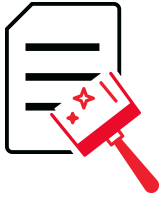 In this step, image processing technologies make the document image easier to convert to text. This includes de-skewing, removing any splotches or hole punches, fixing the color, or even temporarily removing lines around text or temporarily remove logos.
In this step, image processing technologies make the document image easier to convert to text. This includes de-skewing, removing any splotches or hole punches, fixing the color, or even temporarily removing lines around text or temporarily remove logos.
Grooper has nearly 70 different algorithms that can be used and tweaked in real time to help get the cleanest images possible. The result? Your resulting text data is as near perfect as can be.
DID YOU KNOW? Modern capture solutions should include specialized tactics to clean up images. This is actually a vital step in the process, as OCR / capture fails to perform accurate data capture without very clean document images to work with.
Phase 3: Organize / Classify Documents
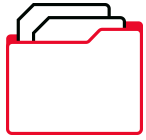 In this phase, the data capture software determines what kind of documents are being captured. The documents are then automatically sorted by document type.
In this phase, the data capture software determines what kind of documents are being captured. The documents are then automatically sorted by document type.
Two functions are being performed simultaneously in this phase:
- Document separation, where one document ends and another begins
- Document classification, which is the determination of the document type
Classification and separation are inextricably linked, but modern systems, like Grooper, allow multiple combinations of classification and separation methods to handle modern business documents.
For instance, say you have a single PDF that contains all the supporting information for an auto loan. While these are related to one transaction, there are numerous document types contained in one PDF. A modern solution must be able to accommodate for situations like this.
Another example is in the mailroom. If mailroom documents are being captured, the solution will classify different documents by their types, like invoices, tax forms, legal documents, sales letters, etc.
Phase 4: Collect / Process and Extract Data
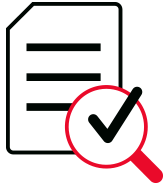 At this step, the data capture solution knows what type of document is being processed and can now apply specific extraction and rules in accordance with the document type.
At this step, the data capture solution knows what type of document is being processed and can now apply specific extraction and rules in accordance with the document type.
It's in this step that the data capture solution performs OCR and ICR, extracts text, and processes it into a machine-readable digital format. The capture software (like Grooper) can perform several different kinds of OCR on the same document in order to capture different fonts of text or a mixture of machine text and handwriting.
All specific data is then extracted, along with metadata.
Phase 5: Data Validation and Delivery
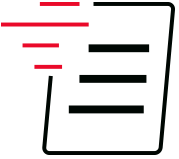 The data capture software checks for pre-determined tolerance rules like calculations, missing fields, etc., to verify and ensure that the data is correct. Any broken rules are highlighted and focused for a human operator to quickly and easily resolve any errors.
The data capture software checks for pre-determined tolerance rules like calculations, missing fields, etc., to verify and ensure that the data is correct. Any broken rules are highlighted and focused for a human operator to quickly and easily resolve any errors.
Captured documents and data at this point are moved to specific databases, ERP systems, drives, or other business data systems. Specific employees can then access those documents and data as needed.
Any personal or sensitive information can be redacted in documents before delivery to data storage.
Benefits of Data Capture Solutions

Automating what were formerly manual processes yields many benefits for your organization. Automated data capture is no different as it provides your business many advantages
Every company and industry is different, so the benefits could be these or possibly even some we haven't discovered yet. In fact, our Grooper customers are continually showing us new ways they are benefitting from document data capture that even we hadn't thought of.
But generally speaking, the benefits of capturing data more accurately include:
Data Efficiency
 There is always an efficiency gain when replacing manual methods with automation — that's why companies make the change. Data capture automation speeds up all downstream business workflows, as they get their data days or weeks quicker.
There is always an efficiency gain when replacing manual methods with automation — that's why companies make the change. Data capture automation speeds up all downstream business workflows, as they get their data days or weeks quicker.
And accurate data from automation helps companies run even faster, cut expenses, and find ways to increase their revenue.
However...newer document data capture solutions are far more efficient than older, legacy solutions because of the rate of technological change.
Why is this such a big deal? Because based on the 1-10-100 rule of data quality, a 5% error rate of data captured translates into 50% of extra labor your employees have to perform to correct it! Every 1% decrease in error rate gives you 10% of your labor back.
The point is that automation is better than manual, but not all data capture automation is created equal.
DID YOU KNOW? There are huge differences between data capture solutions. Legacy data capture solutions still need a lot of manual help, but newer intelligent capture solutions (like Grooper) can eliminate virtually manual data entry. We built Grooper because these other systems could not provide the data our clients require.
Data Accuracy / Vastly Lowered Errors
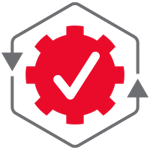 Manual data processing of document data is like begging for errors, incomplete data, or even data that is flat-out missing. Even if you have quality data entry clerks, they still make mistakes, have a bad day at work, or are sick and replaced with someone who isn't good at data entry.
Manual data processing of document data is like begging for errors, incomplete data, or even data that is flat-out missing. Even if you have quality data entry clerks, they still make mistakes, have a bad day at work, or are sick and replaced with someone who isn't good at data entry.
However, with an automated document data capture solution, the manual errors are essentially eliminated (because there should be no more manual work). Your data capture accuracy will increase greatly, and the data validation work performed will decrease significantly.
It will be far faster to ensure consistency and rectify any errors in in data captured. This can greatly save costs down the line in facets of a company, especially in AP departments where matching invoice data to PO data and receiving data is especially arduous by manual methods.
Reduced Costs
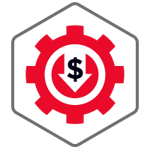 Manual processes may seem like a less expensive solution at first. There is no upfront cost of software, and you can just use employees you already have, right?
Manual processes may seem like a less expensive solution at first. There is no upfront cost of software, and you can just use employees you already have, right?
Actually, using a data capture software actually reduces your costs more than using human labor. And for most companies, labor is their number one expense.
Manual data entry creates errors, and errors cause problems in downstream business workflows. And those problems are costly to fix, in terms of extra work and in dollars, especially when it comes to matching complicated data across document types, like invoices, POs, and shipping documents.
Two Examples of Reducing Costs
With a data capture software solution, manual errors in data capture are eliminated and costs reduced. As mentioned previously, costs in a department can be greatly reduced as rapid data capture via software enables a company to process documents faster.
How much faster? Grooper's clients have seen decreases in processing times by as much as 99%. That's from months to days and days to mere minutes.
This means a company can exceed expectations and reap the benefits of being faster than its competitors.
Those employees stuck doing data entry for eight hours a day can be re-purposed for work that is much more valuable to your company, further reducing operational expenditures and improving revenue.
Time Savings
 Companies can save thousands of hours by moving from manual data capture to automated data capture. Depending on the use case or project, the savings can be even greater.
Companies can save thousands of hours by moving from manual data capture to automated data capture. Depending on the use case or project, the savings can be even greater.
There are many ways that companies are saving significant time through automated data capture. Here are just a few:
- Colleges and universities using our data capture solutions to automate student transcript processing
- Credit unions using Grooper to automatically extract data from member documents, streamlining onboarding
- AP departments performing rapid invoice processing
- Mailrooms capturing data from mail documents and automatically routing them to the appropriate on-site or remote workers
- Healthcare companies reconciling EOB payments in minutes rather than days
- Mortgage companies automating the classification, extraction, and audit preparation for mortgages ensuring lower costs on sold mortgages
Improved Employee Satisfaction and Happiness
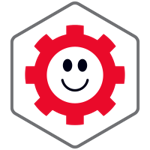 If I haven't said it enough, manual data entry stinks.
If I haven't said it enough, manual data entry stinks.
It's time-consuming and monotonous work.
It's stressful.
Operators have to make sure they are going fast enough but can't make mistakes. This is de-motivating work, and people don't want to do these jobs anymore.
With so much time in the same position, doing repetitive work can lead to fatigue and carpal tunnel syndrome. This is an additional cost in lost employee time and medical expenses.
But with an automated solution, your employees are allowed to focus on higher-value work for your organization. The only manual work left is a little bit of data validation that the automated solution flagged as wrong. Efficiency improves morale.
Employees can even perform work that advances and matches their skill set. As a result, employees are happier to accomplish more important projects, resulting in enhanced productivity and employee satisfaction.
Enhanced Security
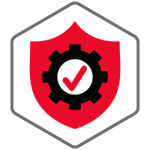 By digitizing documents through a document capture solution, your data is immediately made much more secure. Your paper documents no longer have to be stored in a safe, physical location after digitization.
By digitizing documents through a document capture solution, your data is immediately made much more secure. Your paper documents no longer have to be stored in a safe, physical location after digitization.
Instead of occupying a lot of space, paper documents can be destroyed after being captured electronically.
Visibility into your documents and data will increase greatly, with the capability to encrypt or restrict document data access to specific employees. In the case of fraud or malfeasance, data loss can be easily identified, and unauthorized access can be tracked.
Solutions like Grooper can create two versions of documents:
- One document version with sensitive data (like PII or PCI) redacted and made generally available.
- Another version of the same document with no data redacted can be moved to a restricted system, with access given to only certain departments (like HR) or certain personnel (like directors).
Improved Customer Service
 Companies across industries and use cases utilize Grooper. Many of those companies are credit unions from all around the United States.
Companies across industries and use cases utilize Grooper. Many of those companies are credit unions from all around the United States.
They are a great example of how data capture improves customer service, as they are able to capture or process data from member documents up to an entire week faster than by manual means. This means they can:
- Approve new member applications faster
- Process loan applications quicker
- Make data available faster to members
- Speed up approvals, and inform members faster
We have a medical equipment company that is improving its patients' lives through automated data capture. How? By automatically verifying if potential patients need to provide additional insurance information. This process helps patients get their medical equipment faster.
This is a complicated workflow that can last a week, by the manual methods they were previously using.
These are just two examples of how data capture improves customer service...and even customer's lives!
About the Author: Tim McMullin
Tim McMullin brings extensive sales and solution design experience to help customers and partners successfully meet their business objectives.
With more than 25 years of technical and sales expertise in the enterprise document and data capture space, Tim is responsible for managing Grooper sales at BIS. His leadership focuses on the expansion of all things Grooper, especially the channel and traditionally underserved verticals.
